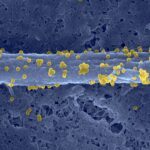Link to Pubmed [PMID] – 21694645
Link to DOI – 10.1097/MD.0b013e318225ab89
Medicine (Baltimore) 2011 Jul; 90(4): 223-230
Mycobacterium genavense, a nontuberculous mycobacterium, led to devastating infections in patients with acquired immunodeficiency syndrome (AIDS) before highly active antiretroviral therapy (HAART) was available, as well as in other immunocompromised patients. We conducted the current study to describe the features of this infection in patients infected with human immunodeficiency virus (HIV) in the HAART era and in non HIV-infected patients.We conducted a retrospective cohort survey in France. All patients with M. genavense infection diagnosed from 1996 to 2007 at the National Reference Center, Institut Pasteur, Paris, were identified and their clinical, laboratory, and microbiologic data were centralized in a single database. Twenty-five cases of M. genavense infection originating from 19 centers were identified. Twenty patients had AIDS, 3 had solid organ transplantation, and 2 had sarcoidosis. Sixty-four percent (n = 16) were male, mean age was 42 years, and median CD4 count was 13/mm (range, 0-148/mm) in patients with AIDS. Twenty-four patients had disseminated infection with fever (75%, n = 18), weight loss (79%, n = 19), abdominal pain (71%, n = 17), diarrhea (62.5%, n = 15), splenomegaly (71%, n = 17), hepatomegaly (62.5%, n = 15), or abdominal adenopathy (62.5%, n = 15). M. genavense was isolated from the lymph node (n = 13), intestinal biopsy (n = 9), blood (n = 6), sputum (n = 3), stool (n = 3), and bone marrow (n = 5). Eleven patients (44%) died, 8 (32%) were considered cured with no residual symptoms, and 6 (24%) had chronic symptoms. The 1-year survival rate was 72%.The prognosis of M. genavense infection in HIV-infected patients has dramatically improved with HAART. Clinical presentations in HIV and non-HIV immunocompromised patients were similar.

